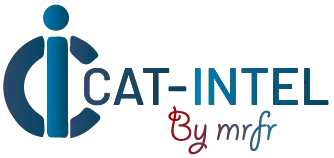Summary Overview
Desiccants Market Overview
The global desiccants market is experiencing steady growth, driven by the increasing need for moisture control solutions across various industries, including pharmaceuticals, food packaging, electronics, and logistics. As industries focus on preserving product quality during transportation and storage, desiccants have become a vital component of supply chain management. This growing demand is supported by innovations in desiccant technology and rising awareness about moisture control in sensitive products. Our report provides a comprehensive analysis of procurement trends in the desiccants market, emphasizing cost-saving opportunities through strategic sourcing, technology adoption, and improvements in supply chain efficiency. Additionally, the report outlines future challenges in the market, particularly regarding supply chain disruptions and pricing fluctuations, and highlights the importance of digital procurement tools to accurately forecast market needs and stay competitive.
The outlook for the desiccants market is promising, with several key trends and projections indicating substantial growth through 2032:
Market Size: The global desiccants market is expected to reach approximately USD 5.3 billion by 2032, reflecting a compound annual growth rate (CAGR) of about 5.4% from 2024 to 2032.
Growth rate: 5.4%
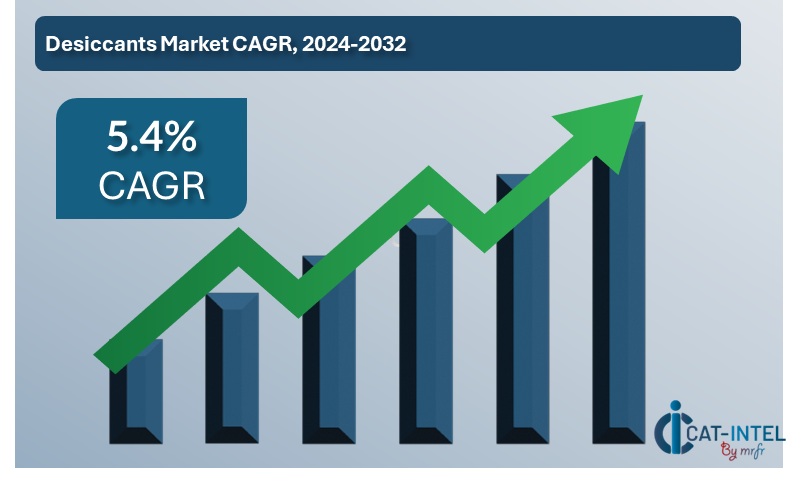
-
Sector Contributions: Growth is primarily driven by:
Pharmaceutical Industry: Increasing demand for moisture control in drug packaging to maintain product integrity and shelf life.
Food Industry: The growing need for moisture control in packaging and preservation of food products.
Electronics and Logistics: Rising demand for desiccants to protect sensitive electronic components and ensure safe transportation.
Technological Transformation and Innovations: Advances in desiccant materials, such as silica gel, molecular sieves, and activated clay, are enhancing moisture control efficiency. Innovations in sustainable desiccants and the integration of automated monitoring systems are improving product quality and supply chain transparency. Additionally, supplier performance management is becoming critical for maintaining consistent quality and optimizing procurement costs in the competitive desiccants market.
Funding Initiatives: Investments in R&D for innovative desiccant products and environmentally friendly moisture control solutions are driving market growth, particularly in emerging markets.
Regional Insights: North America and Europe are key markets for desiccants, given their advanced manufacturing sectors. However, the Asia-Pacific region is expected to experience rapid growth due to increasing industrialization and demand for moisture control solutions in packaging and logistics.
Key Trends and Sustainability Outlook
Sustainability Initiatives: Companies are focusing on developing biodegradable and recyclable desiccants, reducing the environmental impact of moisture control solutions. This trend is particularly significant in food and pharmaceutical packaging, where sustainability is gaining traction.
Health and Safety Trends: Increasing focus on non-toxic, food-safe desiccants that comply with safety and quality standards in sensitive industries such as pharmaceuticals and food packaging.
E-commerce Growth: The rise in online shopping is increasing the demand for desiccants, particularly in the logistics and food sectors, where moisture control is vital for product quality during shipping and storage.
Growth Drivers:
Health and Safety Regulations: Stricter health and safety regulations are driving the demand for high-quality, non-toxic desiccants in sensitive applications.
Industrialization in Emerging Markets: Increased manufacturing activity, especially in Asia-Pacific, is expanding the use of desiccants across various sectors.
E-commerce and Global Logistics: The growth of e-commerce is boosting demand for desiccants to protect products during storage and transportation.
Overview of Market Intelligence Services for the Desiccants Market
Recent analysis reveals that the desiccants market is facing challenges due to fluctuations in raw material costs and supply chain disruptions. Market reports provide detailed cost forecasts and procurement strategies to help businesses manage these challenges. By leveraging insights from these reports, companies can optimize purchasing decisions, mitigate cost volatility, and ensure access to high-quality desiccants. Implementing strategic sourcing practices and utilizing market intelligence tools will help businesses manage risks and maintain a competitive edge in the desiccants market.
Procurement Intelligence for Desiccants Market: Category Management and Strategic Sourcing
"To stay ahead in the desiccants market, companies are optimizing procurement strategies, leveraging spend analysis for vendor spend analysis, and enhancing supply chain efficiency through supply market intelligence. Procurement category management and strategic sourcing are becoming essential for cost-effective procurement and ensuring the timely availability of high-quality desiccants for production and distribution."
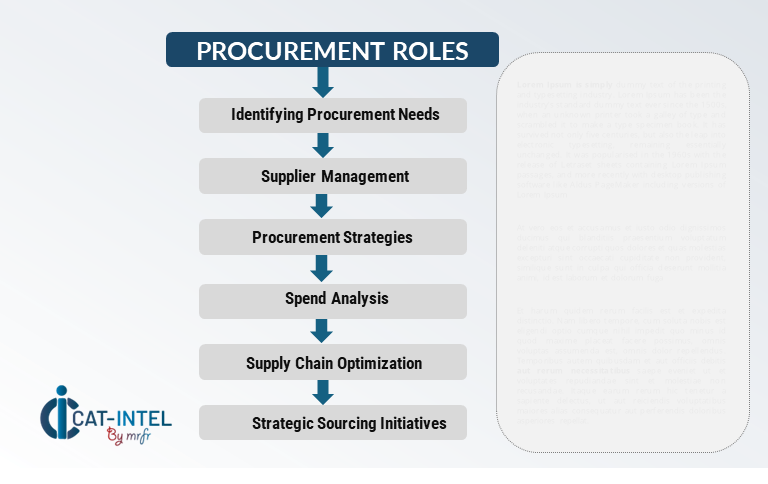
Pricing Outlook for Desiccant Market: Spend Analysis
The desiccant market is currently navigating a complex pricing environment characterized by fluctuations driven by supply chain challenges, raw material price variations, and increasing demand in diverse sectors like pharmaceuticals, electronics, and food storage. This dynamic environment reflects ongoing shifts in production costs, global demand, and technological advancements in desiccant materials.
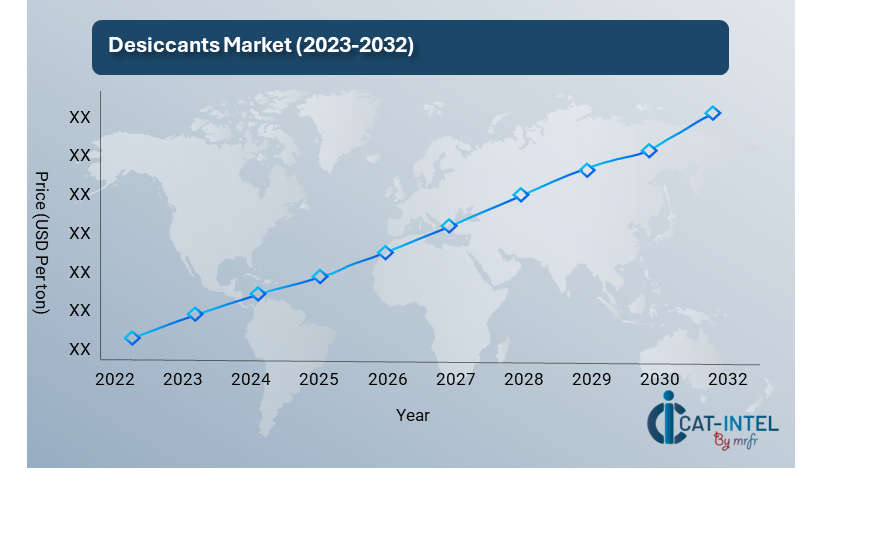
Line chart illustrating the pricing outlook for the desiccant industry from 2023 to 2032. The chart shows the projected price trends, with prices gradually increasing over the years.
Our advanced analysis indicates a steady growth trajectory in desiccant prices driven by several key factors, including:
Rising Raw Material Costs: The increasing cost of raw materials, such as silica gel, activated alumina, and other desiccant agents, is putting upward pressure on prices.
Surge in Demand: As industries like pharmaceuticals, electronics, and food packaging demand more moisture control solutions, prices are expected to increase to meet these needs.
Supply Chain Challenges: Logistics issues, particularly in sourcing raw materials and delivering finished products, contribute to price volatility.
Technological Advancements: Innovations in desiccant materials, including more efficient and eco-friendly formulations, are influencing pricing structures, as higher-performance products often come with higher costs.
Environmental and Regulatory Pressures: Stricter environmental standards and regulations, particularly in industries like food and pharmaceuticals, could increase production costs, leading to price increases for desiccant solutions.
Cost Breakdown for the Desiccant Market: Cost Saving Opportunities
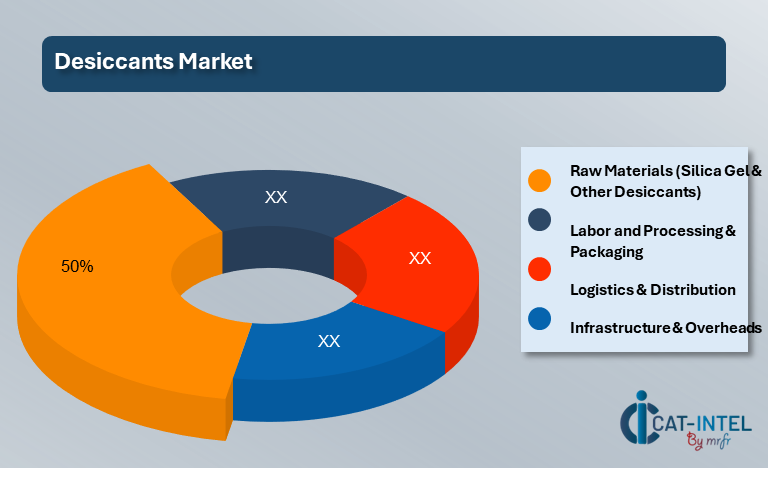
-
Raw Materials (Silica Gel & Other Desiccants) (50%)
Description: Represents the bulk cost of raw materials used in desiccant production, including silica gel, activated alumina, and molecular sieves. These materials are the primary ingredients for creating desiccants.
Trends: Raw material prices have seen steady increases, primarily due to supply chain disruptions and increased global demand across industries like pharmaceuticals, food packaging, and electronics. Silica gel remains the dominant material, with fluctuations in pricing influenced by mining, production capacity, and environmental regulations.
Labor (XX%)
Processing & Packaging (XX%)
Logistics & Distribution (XX%)
Infrastructure & Overheads (XX%)
Cost saving opportunity: Negotiation Lever and Purchasing Negotiation Strategies in the Desiccants Market
Optimizing procurement in the desiccants market can lead to significant cost savings and enhance operational efficiency. Collaborative purchasing allows manufacturers to negotiate bulk discounts, while sustainable sourcing reduces raw material costs through locally sourced desiccant materials. Implementing process optimization techniques streamlines manufacturing, cutting down waste and improving efficiency. Vertical integration enables companies to lower costs by producing desiccant materials in-house. Technological advancements, such as automation and data analytics, improve production efficiency and reduce labour costs. Energy-efficient processing facilities reduce utility expenses, and transportation optimization minimizes freight costs by consolidating shipments and improving delivery routes. Building strong supplier relationships ensures better pricing and priority service, further enhancing cost savings. Marketing cooperatives help share advertising expenses, maximizing profitability while managing operational costs.

Supply and Demand Overview of the Desiccants Market: Demand-Supply Dynamics and Buyer Intelligence for Effective Supplier Relationship Management (SRM)
The desiccants market is experiencing notable growth, driven by increasing applications across various industries such as food packaging, pharmaceuticals, electronics, and air conditioning systems. This expansion is supported by technological advancements and a growing emphasis on product quality and longevity.
Demand Factors:
Food and Pharmaceutical Packaging:The rising demand for desiccants in food and pharmaceutical packaging is a significant driver. Desiccants are essential for maintaining product integrity by controlling moisture levels, thereby extending shelf life and ensuring safety. The pharmaceutical packaging market is expected to grow at a compound annual growth rate (CAGR) of 14.4% through the forecast period.
Electronics Industry:The electronics sector's growth has increased the demand for desiccants to protect sensitive components from moisture damage during storage and transportation. The electronics market is projected to grow at a CAGR of 5.3% through the forecast period.
Air Conditioning Systems:Desiccants are increasingly used in air conditioning systems to enhance efficiency and performance by controlling humidity levels. The air conditioning system market is expected to grow at a CAGR of 6.2% through the forecast period.
Technological Advancements:Innovations in desiccant materials and applications are expanding their use across various industries, further driving demand.
Supply Factors:
Global Production Capacity:The desiccant market is expected to grow at a CAGR of 5.24% from 2023 to 2030, with the market size projected to reach $1.50 billion by 2030.
Raw Material Availability:The supply of raw materials such as silica gel, activated alumina, and calcium chloride is crucial for desiccant production. Fluctuations in the availability and cost of these materials can impact supply stability.
Manufacturing Capabilities:Advancements in manufacturing processes and increased production capacities are enhancing the ability to meet growing demand.
Regulatory Compliance:Adherence to industry standards and regulations, especially in sectors like pharmaceuticals and food, is essential for maintaining supply chain integrity.
Regional Demand-Supply Outlook: Desiccants Market
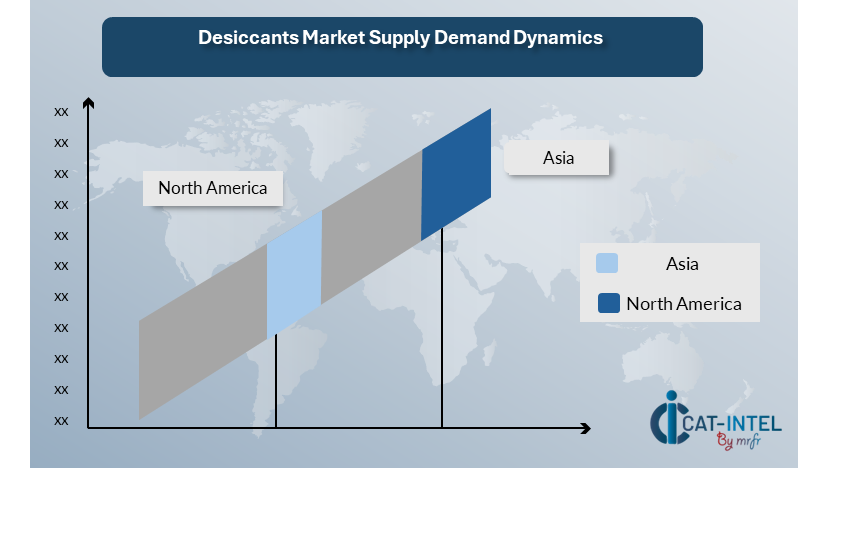
The desiccants market is experiencing significant growth across various regions, driven by increasing industrial applications and consumer demand. Below is an overview of the demand-supply dynamics in key regions:
Asia Pacific: A Dominant Force in the Desiccants Market
Leading Producers:China is expected to secure a leading share in Asia Pacific due to rapid industrialization and expansion in manufacturing activities, presenting major opportunities for desiccant manufacturers.
Strong Export Market:The region's robust manufacturing base supports a significant export market, particularly in electronics and pharmaceuticals, enhancing its global influence.
Innovation in Processing:Advancements in desiccant materials and applications are expanding their use across various industries, further driving demand.
Focus on Sustainability:Increasing emphasis on moisture control in packaging to extend shelf life and reduce wastage is boosting market growth in countries like China and India.
Consumer Trends:The growing demand for packaged and processed food products, driven by changing consumer lifestyles, further fuels the need for desiccants in the region.
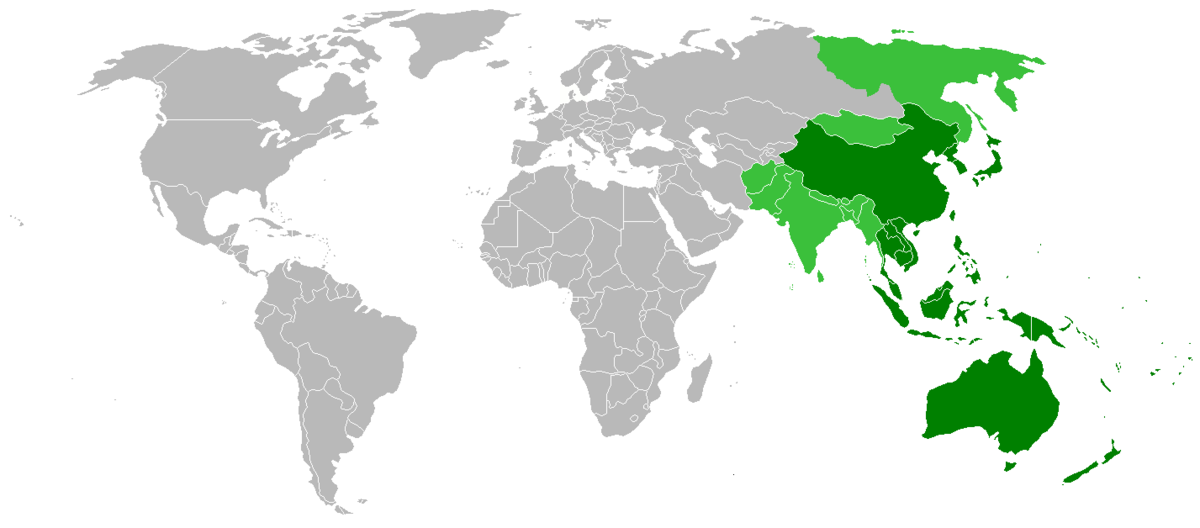
Asia Pacific remains a key hub for Desiccants market and its growth
Supplier Landscape: Supplier Negotiations and Strategies in the Desiccants Market
The desiccants market features a diverse and extensive supplier landscape, comprising both global and regional players that supply critical raw materials and services essential for desiccant production, processing, and distribution. Key suppliers provide various raw materials such as silica gel, activated alumina, molecular sieves, and packaging materials, which contribute to the overall efficiency and sustainability of the desiccant production process.
Currently, the supplier landscape is characterized by strong relationships between desiccant manufacturers and suppliers of raw materials. This collaboration is essential for maintaining product quality, enhancing performance, and ensuring sustainable manufacturing practices. In addition, suppliers of packaging materials play an essential role in supporting the growing demand for desiccant products, particularly in the electronics, pharmaceuticals, and food packaging sectors.
Some of the key raw material suppliers in the desiccants market include:
Clariant International Ltd.
BASF SE
Honeywell International Inc.
W. R. Grace & Co.
Porocel Corporation
Hengye, Inc.
Fuji Silysia Chemical Ltd.
Desicca Chemicals Pvt. Ltd.
TROPACK Packmitel GmbH
Multisorb Technologies Inc.

Key Development: Procurement Category significant development
Category |
Development |
Impact on Market |
Raw Material Sourcing |
Expansion of raw material suppliers, such as silica gel, activated alumina, and molecular sieves. |
Improved supply chain stability and product performance, driving competitive pricing. |
Technological Innovation |
Introduction of advanced desiccant materials with enhanced moisture-absorbing properties (e.g., molecular sieves). |
Increased efficiency in moisture control applications, reducing spoilage and improving product longevity. |
Sustainability Initiatives |
Development of eco-friendly and reusable desiccants (e.g., biodegradable silica gel). |
Enhanced market appeal in industries like pharmaceuticals and food packaging, where sustainability is a growing concern. |
Regulatory Compliance |
Strengthened regulatory frameworks on moisture control and packaging materials, especially in food and pharmaceutical sectors. |
Compliance ensures the continued use of desiccants in sensitive applications, such as in drug packaging, while avoiding legal and environmental risks. |
Procurement Attribute/Metric |
Details |
Market Sizing |
The global desiccants market was valued at approximately USD 1.24 billion in 2023 and is projected to reach around USD 5.3 billion by 2033, growing at a CAGR of 5.4% during the forecast period. |
Adoption of Desiccant-Based Products |
The increasing demand for moisture control in various industries, including pharmaceuticals, food, and electronics, has spurred the adoption of desiccant products. The pharmaceutical desiccant market is expected to grow at a CAGR of 5.4% during the forecast period. |
Top Strategies for 2024 |
Key strategies include focusing on sustainable manufacturing practices, diversifying product offerings (e.g., biodegradable desiccants), and enhancing supply chain resilience to meet the growing demand across various sectors. |
Automation in Desiccant Production |
A significant portion of desiccant production facilities are adopting advanced technologies to improve operational efficiency and reduce waste, though specific percentages are not readily available. |
Procurement Challenges |
Challenges include fluctuating raw material prices, ensuring consistent product quality, and meeting stringent regulatory requirements across different industries. |
Key Suppliers |
Major players in the desiccants market include Clariant International Ltd., BASF SE, Honeywell International Inc., W. R. Grace & Co., and Porocel Corporation, focusing on value-added desiccant products. |
Key Regions Covered |
Major markets include North America, Europe, and Asia-Pacific, with significant demand from the U.S., China, and India. Asia Pacific is expected to dominate the desiccants market, accounting for a significant share of global demand. |
Market Drivers and Trends |
Growth is driven by increasing awareness of moisture-related issues, rising demand for moisture-sensitive products, and expanding applications in the food, pharmaceutical, and electronics industries. |
